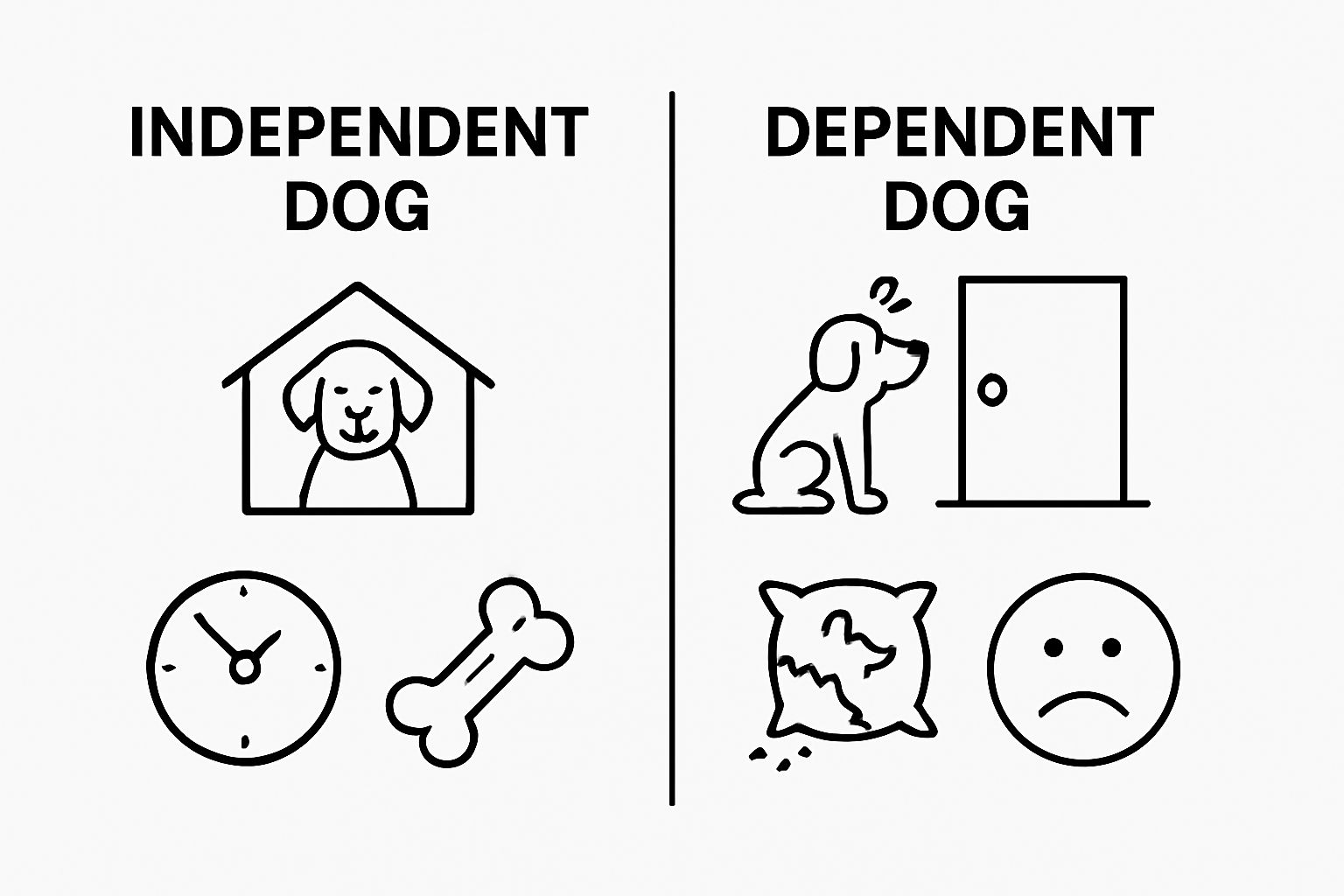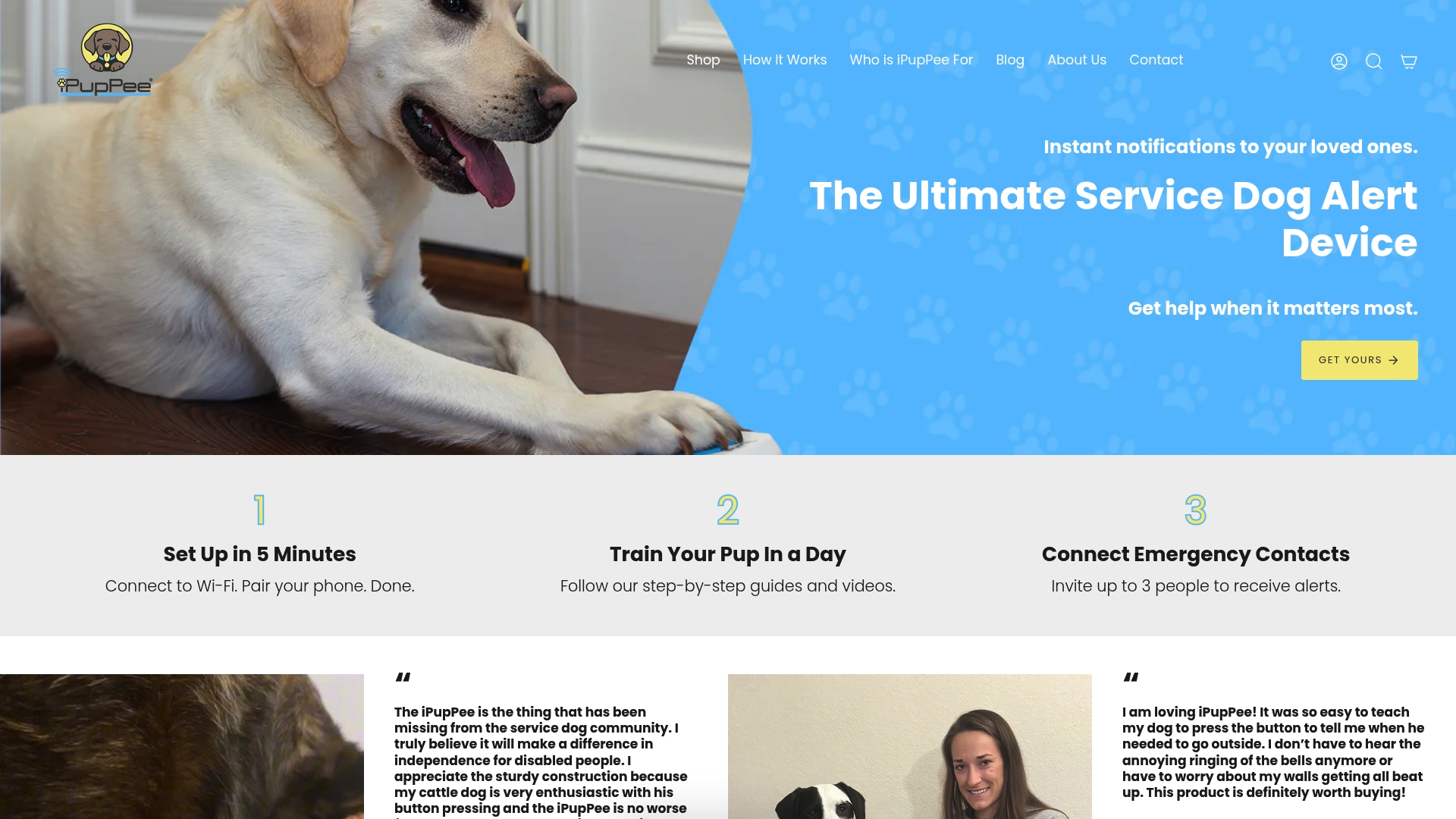Dog independence sounds like a recipe for a distant or stubborn pet, right? Research shows the opposite. Dogs with higher independence levels have dramatically lower rates of separation anxiety and destructive behaviors according to the ASPCA. So the real surprise is this. A more independent dog actually creates a closer and stronger bond with its owner.
Table of Contents
- What Are Dog Independence Benefits?
- Why Dog Independence Matters For Dogs And Owners
- How Dog Independence Can Improve Behavior And Training
- Key Concepts Behind Fostering Dog Independence
- Real-World Examples Of Dog Independence Benefits
Quick Summary
| Takeaway | Explanation |
|---|---|
| Encouraging dog independence reduces anxiety. | Independent dogs experience lower stress and are more emotionally stable, making them less likely to develop separation anxiety. |
| Independent dogs require less supervision. | By fostering independence, owners gain flexibility in their routines, as these dogs can entertain themselves. |
| Independence training improves behavior. | Training dogs to be independent enhances their self-control and problem-solving skills in various situations. |
| Healthy canine independence benefits owners too. | A balanced relationship where dogs feel secure leads to reduced owner stress and a more harmonious household dynamic. |
| Fostering independence involves strategic training. | Successful independence training requires structured environments that encourage exploration and decision-making abilities in dogs. |
What are Dog Independence Benefits?
Dog independence represents a strategic approach to canine behavior and training that empowers dogs to manage themselves confidently while maintaining strong connections with their owners. This concept goes beyond traditional obedience, focusing on developing self-reliance and emotional resilience in dogs.
Understanding Canine Self Sufficiency
Independent dogs demonstrate remarkable abilities to regulate their emotions, manage stress, and adapt to various environments without constant human intervention. Research from the ASPCA shows that dogs with higher independence levels experience significantly reduced separation anxiety and destructive behaviors.
Key characteristics of independent dogs include:
- Ability to entertain themselves without constant owner interaction
- Calm demeanor when left alone
- Reduced dependency on human presence for emotional stability
Psychological and Behavioral Advantages
Dog independence benefits extend far beyond simple convenience. By cultivating independence, owners help their dogs develop essential coping mechanisms that contribute to overall mental health.
Independent dogs typically exhibit lower stress levels, better problem solving skills, and more confident social interactions.

Read more about how dogs support senior independence, which highlights the interconnected nature of canine and human psychological well being. This mutual independence creates a more balanced and harmonious relationship between dogs and their human companions.
Why Dog Independence Matters for Dogs and Owners
Dog independence is not merely a training technique but a holistic approach that fundamentally transforms the relationship between dogs and their human companions. This approach recognizes that healthy canine development requires psychological autonomy and emotional resilience.
Psychological Well Being for Dogs
Independent dogs experience significantly reduced stress and anxiety levels compared to overly dependent animals. Research from the Humane Society indicates that dogs with strong independent skills demonstrate better emotional regulation and adaptability in various environments.
Key psychological benefits include:
- Enhanced emotional stability
- Reduced likelihood of developing separation anxiety
- Improved capacity to handle unexpected changes
Practical Benefits for Owners
For dog owners, nurturing canine independence creates substantial practical advantages. Independent dogs require less constant supervision, allowing owners more flexibility in their daily routines. These dogs can comfortably entertain themselves, reducing owner stress and creating a more balanced household dynamic.
To clarify the distinct advantages for both dogs and their owners, the table below outlines the practical and psychological benefits of fostering canine independence.
| Benefit Type | For Dogs | For Owners |
|---|---|---|
| Emotional Stability | Reduced stress and anxiety | Less worry about dog well-being |
| Adaptability | Better handling of changes and new situations | Flexibility in routines and less need for supervision |
| Separation Anxiety | Lower risk of developing separation anxiety | Fewer issues when leaving the dog alone |
| Self-Entertainment | Ability to stay engaged without constant attention | More time for personal tasks or commitments |
| Behavioral Issues | Decreased destructive or reactive behaviors | Fewer household disruptions |
| Bond Strength | More balanced and harmonious relationships | Enhanced connection and trust with the dog |
Learn more about dog safety techniques that complement independence training. By understanding and supporting their dog’s psychological autonomy, owners create a more harmonious and mutually respectful relationship that benefits both species.
How Dog Independence Can Improve Behavior and Training
Dog independence is a powerful approach that fundamentally transforms traditional training methodologies, focusing on developing self-regulation and intrinsic motivation in canines. This strategy shifts training from external control to internal understanding, creating more resilient and adaptable dogs.
Behavioral Transformation Mechanisms
Independence training works by empowering dogs to make confident choices and manage their emotional responses. Research from the American Kennel Club demonstrates that dogs trained with independence-focused techniques demonstrate superior problem solving skills and reduced reactive behaviors.
Key behavioral improvements include:
- Enhanced self control in challenging environments
- Reduced anxiety triggered by sudden changes
- More nuanced understanding of owner expectations
Training Approach Refinement
Traditional training often relies on constant human direction, whereas independence training cultivates a dog’s ability to think independently. This approach encourages dogs to understand underlying principles rather than merely following rigid commands. Dogs develop a deeper comprehension of expected behaviors, leading to more reliable and consistent performance.
This table summarizes the key differences between traditional obedience training and independence-focused training approaches, helping illustrate their core principles and outcomes.
| Training Approach | Core Focus | Dog’s Role | Owner Involvement | Typical Outcome |
|---|---|---|---|---|
| Traditional Obedience | Following specific commands | Reactive, follows directions | Continuous instruction and control | Compliance with set routines, external motivation |
| Independence-Focused | Autonomy, self-regulation | Proactive, makes decisions | Guidance with structured freedom | Adaptable, resilient, internal motivation |

Explore our comprehensive guide to dog training benefits to understand how independence training can revolutionize your approach to canine education. By recognizing dogs as intelligent, adaptive beings, owners can unlock their pets’ full potential and create more meaningful, cooperative relationships.
Key Concepts Behind Fostering Dog Independence
Fostering dog independence is a nuanced approach that requires understanding complex psychological and behavioral dynamics. This method goes beyond traditional training, focusing on developing a dog’s intrinsic capabilities and emotional intelligence.
Psychological Foundation of Independence
Research from the Animal Behavior Society reveals that independence is not about detachment, but about building a dog’s confidence and self regulation skills. The goal is to create a balanced relationship where dogs feel secure enough to make appropriate decisions without constant human micromanagement.
Critical psychological elements include:
- Developing emotional resilience
- Building cognitive problem solving abilities
- Establishing trust between dog and owner
Practical Implementation Strategies
Successful independence training requires a strategic and patient approach. Owners must create environments that encourage exploration, decision making, and controlled risk taking. This means providing structured opportunities for dogs to learn from their experiences while maintaining a safety net of guidance and support.
Learn more about puppy training fundamentals that lay the groundwork for long term independence. By understanding these key concepts, dog owners can transform their relationship from one of strict control to collaborative partnership, ultimately creating more confident and adaptable canine companions.
Real-World Examples of Dog Independence Benefits
Real world scenarios demonstrate the profound impact of cultivating dog independence across diverse environments and living situations. These practical examples highlight how independence training transforms canine behavior and enhances human animal relationships.
Professional and Service Dog Contexts
Research from the ASPCA reveals that independent dogs excel in professional settings, particularly in service and working roles. Service dogs trained with independence techniques display remarkable adaptability, making critical decisions while maintaining strong communication with their handlers.
Notable professional independence scenarios include:
- Guide dogs navigating complex urban environments
- Search and rescue dogs making autonomous decisions during emergencies
- Therapy dogs adjusting to different patient interaction requirements
Household and Family Dynamics
Independent dogs create more harmonious home environments by reducing owner stress and increasing mutual understanding. These dogs can entertain themselves, manage emotional responses, and adapt to changing household circumstances without experiencing significant anxiety or displaying destructive behaviors.
Explore service dog benefits and support strategies to understand how independence transforms canine companionship. By recognizing and nurturing a dog’s capacity for independent thinking, owners unlock a deeper, more responsive relationship that benefits both human and animal.
Make Dog Independence Easier With Reliable Communication and Safety
Do you worry about your dog’s separation anxiety or wish for smoother independent behavior at home? The article highlights how promoting dog independence leads to emotional resilience, reduced stress, and more harmonious routines. Yet many owners still face the challenge of helping their dogs feel secure and self-reliant—especially when communication is limited or safety is a concern for seniors and people living alone.

iPupPee delivers a smart solution that bridges this gap. Our alert device empowers your dog to easily communicate their needs, supporting the independence you strive for. By combining independence-building tools and tailored training, we help you transform anxiety into confidence—giving both you and your dog the freedom you deserve. Take the next step to a more independent and harmonious life with your pet. Discover the benefits at ipuppee.com and start building safer, smarter habits today.
Frequently Asked Questions
What is dog independence?
Dog independence refers to a training approach that encourages dogs to develop self-reliance and emotional resilience, allowing them to manage themselves confidently while maintaining strong connections with their owners.
What are the benefits of fostering dog independence?
Fostering dog independence leads to numerous benefits including reduced stress and anxiety, improved emotional regulation, and better problem-solving skills in dogs. It also allows owners greater flexibility in their routines, as independent dogs require less constant supervision.
How can I train my dog to be more independent?
To train your dog to be more independent, create positive experiences that encourage exploration and decision-making. Gradually allow your dog to entertain themselves and manage their emotional responses without constant human interaction, while providing structured guidance and support when needed.
How does dog independence affect behavioral issues like separation anxiety?
Independent dogs typically exhibit lower levels of separation anxiety and destructive behaviors. By promoting self-reliance, owners can help their dogs adapt better to being alone and manage their emotional responses effectively.
Recommended
- Top Benefits of Dog Training for All Pet Owners in 2025 – iPupPee
- How Dogs Help Seniors: Health, Happiness, and Independence 2025 – iPupPee
- Dog Training Emotional Benefits: Improve Bonding & Well-Being 2025 – iPupPee
- Puppy Training Importance: Key Benefits for Every Dog Owner – iPupPee
- Understanding Why Use Hands-Free Leashes for Dogs

